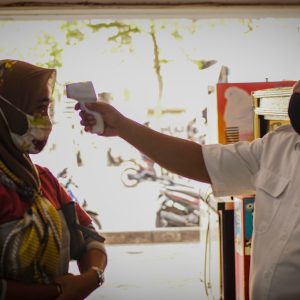When we think about the intensive care unit, most of us would assume it’s a place that provides the best possible treatment for patients, and is always on the cutting edge of science, medicine and technology.
But while this may be true in many aspects, when it comes to things like sedation, early mobility, and management of delirium in the ICU, unfortunately, most ICUs are still using woefully outdated practices.
Over the years, I’ve seen time and time again how these outmoded protocols can have an absolutely devastating effect on patient outcomes.
One particularly egregious example of this involved a woman named Susanne.
This is her story.
How Susanne Became a Victim of the ICU Assembly Line
Susanne was a healthy 49-year-old woman who developed Ludwig’s angina. She was admitted to the ICU for sepsis and polymicrobial cellulitis airway compromise due to significant submandibular swelling.
She was intubated and put on mechanical ventilation to protect her airway.
Prior to intubation, the risks of prolonged sedation and immobility were not disclosed to Susanne and her family, and she was not given the option to be awake and mobile.
Due to the prevailing ICU culture of automatically sedating every patient on mechanical ventilation, Susanne was deeply sedated and immobile for 18 days, despite the lack of a clear indication of the need for prolonged deep sedation.
It is important to understand that accumulating evidence shows there are only a few cases in which continuous deep sedation is essential for patients on mechanical ventilation.
Those exceptions include things like intracranial hypertension, severe respiratory failure, refractory status epilepticus, and prevention of awareness in patients treated with neuromuscular blocking agents.
Needless to say, Susanne did not require deep sedation, and there’s evidence to show she would have been a prime candidate for remaining awake while on the ventilator.
Susanne reports suffering deeply traumatizing delirium that included vivid and graphic delusions that felt more real to her than the reality she now lives.
It is unclear how long she needed the endotracheal tube for the protection of her airway, but long before she was liberated from sedation and extubated, she was given sedation vacations in attempts to do breathing trials.
However, when sedation was decreased, she became physically active and expressed the terror and agitation she was experiencing from her delirium. This is a common occurrence during sedation vacations.
At this point, Susanne recalls hearing clinicians at her bedside saying, “Well, she’s too crazy. She’s not ready to come off of this. We’ll try again in a few days.”
It’s anyone’s guess how many more days of mechanical ventilation, deep sedation, and delirium Susanne was subjected to because of her response to what she had experienced.
Her husband finally convinced the ICU team to take sedation off, allow Susanne to wake up, and get her off the ventilator. Without his persistence, who knows how much longer she would have had to endure this suffering.
Remarkably, her lungs were healthy, and the swelling in her airway had likely decreased well before 18 days had elapsed, but due to her ICU team’s outdated practices, she remained sedated because she was intubated and intubated because she was sedated.
When she was admitted to the ICU, Susanne weighed 130 pounds, but during those 18 days of immobility and muscular atrophy, she lost 35 pounds – mainly of lean muscle.
She reports that the first time she stood on her feet again after being sedated was like stepping on glass because of the neuropathy she had developed.
Her journey to rebuild muscle, regain the weight, and return to her baseline psychological, cognitive, and physical capacity has been quite the struggle, and Susanne wishes she had been allowed to remain awake, present, and mobile during her ICU stay.
Unfortunately, Susanne fell victim to the ICU assembly line of automatic deep sedation and immobility for every patient on mechanical ventilation.
She suffered ICU delirium, ICU-acquired weakness, prolonged time on the ventilator, and possible long-term deficits because of the choice to sedate her for 18 days.
Long after her ICU discharge, Susanne continues to be haunted by the stress, terror, and panic experienced while under sedation.
If you want to know more about her story, you can listen to Episode 92 of my Walking Home From The ICU podcast.
How the ABCDEF Bundle Can Improve ICU Patient Outcomes for People Like Susanne
The decision to deeply sedate Susanne is typical of ICU culture, and was likely habitual, but there was certainly no need for it.
If this ICU team was following evidence-based practices, they would have applied the ABCDEF Bundle to help Susanne stay awake, free of delirium, and mobile during her time on mechanical ventilation.
The ABCDEF Bundle provides a set of evidence-based practices for how to improve ICU patient outcomes for those who may require sedation in the ICU.
It encourages exercise and early mobility in the ICU, family engagement and empowerment, the assessment, prevention, and management of both pain and delirium, and also recommends conducting both Spontaneous Awakening Trials (SATs) and Spontaneous Breathing Trials (SBTs), while allowing patients to choose whether they want to receive analgesia and sedation.
The failure to apply the ABCDEF bundle in Susanne’s care increased her risk of:
● Death
● Delirium
● Post-ICU PTSD
● Post-ICU cognitive impairments
● Post-ICU syndrome
● ICU-acquired weakness
● Prolonged time on the ventilator
● Hospital-acquired infections
● Hospital-acquired pressure injuries
● Extensive rehabilitation
● Longer time in the ICU and hospital
● Increased risk of hospital and ICU readmission
Susanne’s story provides a clear example of the results from numerous studies, which show that deep sedation typically results in more time on the ventilator.
It’s also important to mention that proper sedation practices and early mobility in the ICU have been shown to improve ICU patient outcomes, and likely would have prevented delirium and significantly decreased Susanne’s time on the ventilator, among other outcomes.
If her ICU team had been following evidence-based practices, they would have known that:
Long story short, the ABCDEF bundle could have prevented much of this unnecessary suffering, and alleviated the costs of time and money for both Susanne and her ICU care team.
If you want to know more about how I can help you advocate for evidence-based practices in your ICU, or the ICU where your family member has been admitted, please don’t hesitate to contact me.
Kali Dayton









